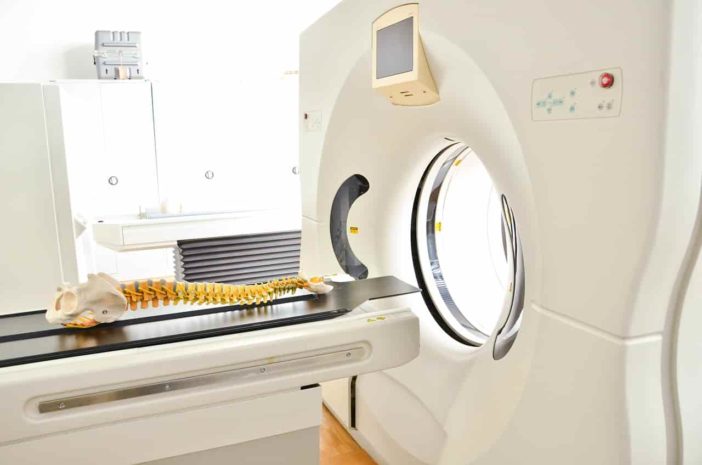Godfrey Hounsfield invented the first CT scanner in 1972; it was intended for medical imaging and remained that way for years until CT scanning began to be used for industrial applications as well. Godfrey probably never imagined that happening but his wonderful invention did end up helping immensely outside of the medical profession. Industrial computed tomography (CT), also known to some as industrial CAT scanning, is a type of scanning that uses a tomographic process with the help of computers.
This is usually done by employing computed tomography with X-rays to achieve a three-dimensional representation of a scanned object in order to measure volumetric detail. Dimensional inspection labs, also called Dimensional Metrology, is a CT scanning process used across a number of industries that helps to ensure accuracy in product features by assessing the geometric qualities of machined parts and products in order to ensure uniformity.
Uses for Computed Tomography
When there is a need to evaluate, analyze or test either the internal or external features of a part of an entire object without causing any damage to it, computed tomography is chosen because the x-rays that are utilized can effectively achieve this in metallic objects, non-metallic objects, solid materials, fibrous materials, and other objects that happen to have an irregular surface. There are various phases of the manufacturing process where Industrial computed tomography (CT) can be employed. Industrial computed tomography (CT ) is used here precisely because it produces a nondestructive evaluation of the interior structures of the objects that are being tested. Here are some examples:
Pre-production
Industrial computed tomography (CT) can be useful before an object is produced because it helps the process of design with analyzing data.
Production
During the production stage of manufacturing, evaluating the consistency of objects ensures that quality standards are being met.
Reverse engineering
Where reverse engineering is necessary, measurements of an entire object or just part of it are taken in order to make an exact CAD replica. This is a remarkably useful application when there exists a manufactured part or object, but none of the design data that was used to make it in the first place is available.
Non-contact measurement
This application has to do with using 3D scanners to create the geometry of an object in order to analyze it for various purposes such as detecting flaws.
Contact measurement
This technique captures single points that are relative to one another. This can be done in order to analyze localized or small volume information.
2D Images Versus3D Images
When x-ray scanning is utilized for any purpose at Dimensional inspection labs or anywhere else, whether that purpose is of a medical nature or an industrial nature, it produces 2D images. But that is not good enough for the industrial purposes in question. By using computed tomography, we can attain higher-quality digital images that show the internal structure of a part or object. We also get the added benefit of being able to completely manipulate the 3D images that are rendered by advanced CT scanners; this allows for an excellent way to perform a visual inspection from any angle that we chose and for whatever purpose that is required.
Types of Industrial CT Scanners
Line beam scanning is the normal process that is used in various industries when it comes to industrial CT scanning. The basic procedure uses X-rays with the beam being collimated in order to prevent it from spreading. At that point, the X-ray line beam is focused on the object in question in order to collect the necessary information. A detector picks up this data and a computer then produces a 3D image. Another type of CT scanner is a cone beam scanner. With this type of scanner, the part or object that is going to be scanned is put on a rotary table. As the table rotates, a cone of X-rays is utilized in order to produce 2D images which are then processed by a computer to make a 3D image. Cone beam scanning has the added benefit of being a faster way to produce the 3D image.
Industrial Computed Tomography (CT) Evolved From Medical CT Scanners
At Dimensional inspection labs, we know that CT scanning is not a new technology; radiologists have been using it for years to perform medical diagnostics on patients, since 172 in fact. Industrial computed tomography (CT) was further developed with the same goals of analyzing something internally, but here it is an object instead of a person. Engineers and others realized that X-rays have capabilities that could help them to produce cross-sectional images of an object so that it could be analyzed in great detail. CT scanners allow for volume-rendered through the act of processing cross-sectional images, and the 3D rendering that results from this process helps a specialist to detect defects such as cracks, and to perform other applications. Of course, a computer must work in tandem with the CT scanner in order for everything to be done properly.





